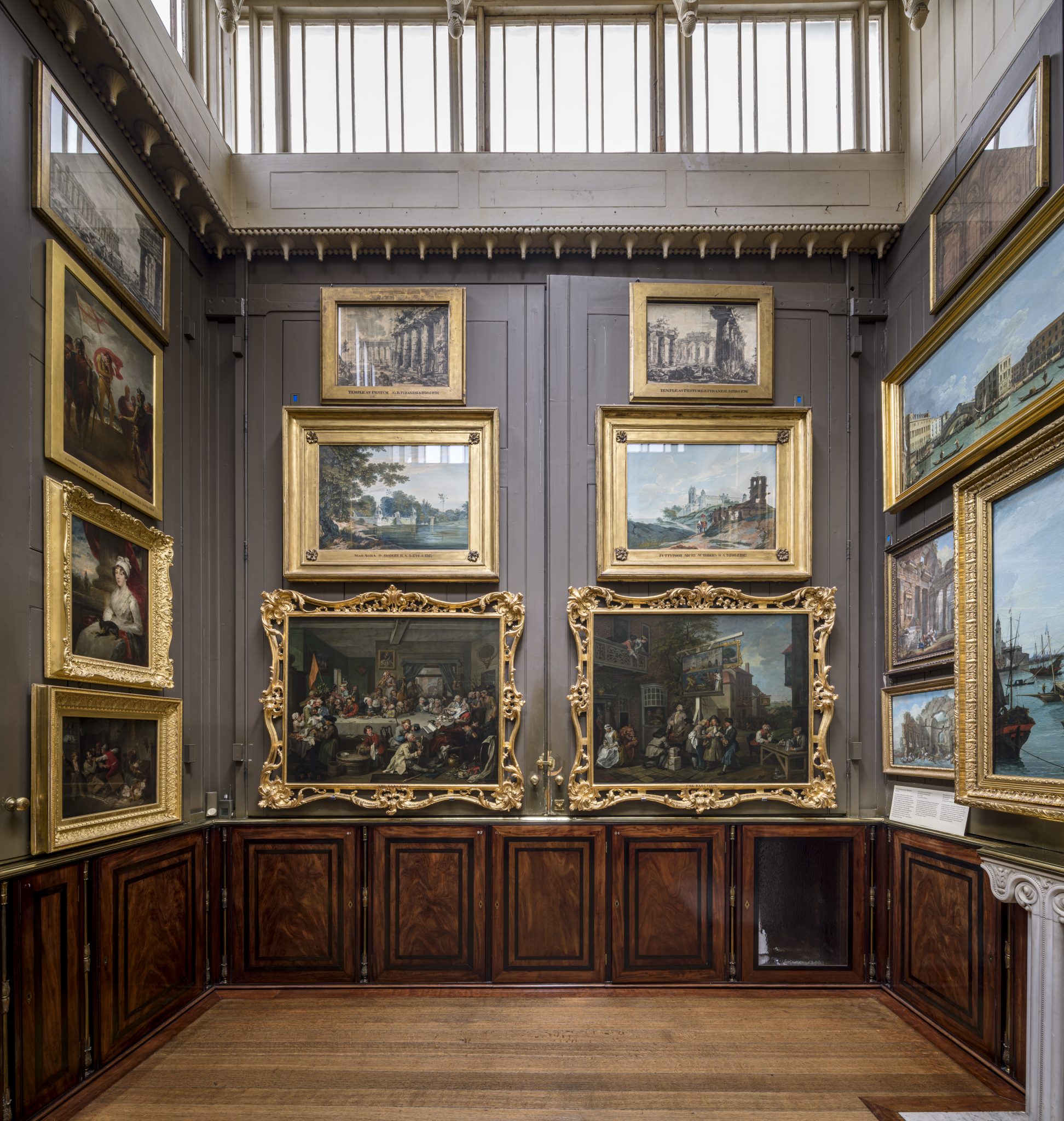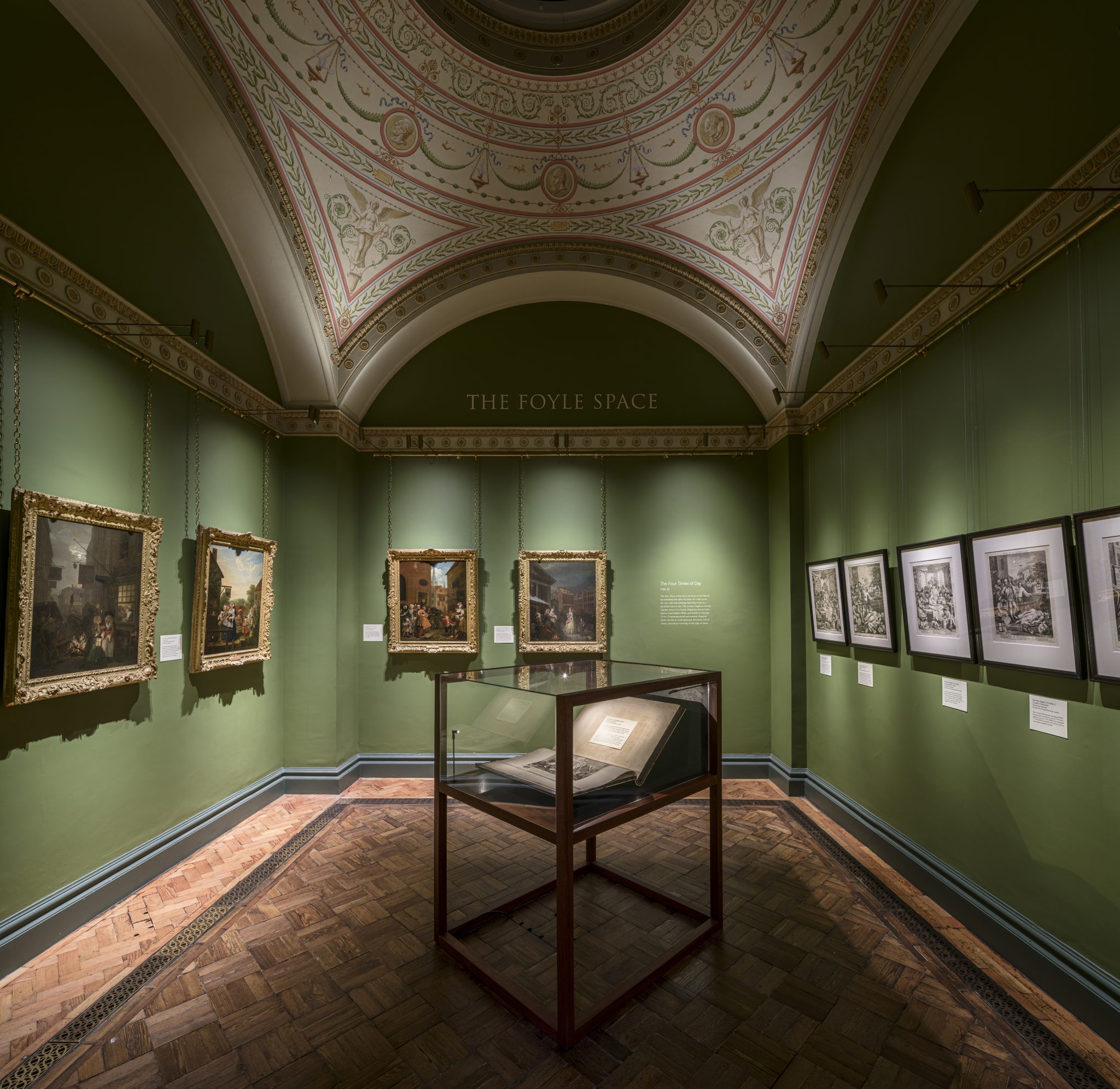Prostitution, criminality, madness, lust, and squalor.
William Hogarth’s collection of paintings and prints at the Sir John Soane’s Museum satirize 18th century urban crudities through graphic pictorial dramatizations and dark wit. Brought together from the National Trust, the National Gallery, Tate Britain as well as private and in-house collections, Hogarth’s series use the urban spaces of London’s streets, home interiors, brothels and public hangings to narrate stories of the exaggerated every day. The Rakes Progress, A Harlot’s Progress, Marriage a la mode, and Four Stages of Cruelty amongst others, document descents into immorality as urban fashion spurns on vulgarization, and industrial wealth breeds greed and idleness alongside endemic poverty. Hogarth is a brave critic of London and its moral topographies, and the grandfather of the modern political cartoon; he speaks in generalization but shouts for the injustice of the individual.
The Rake’s Progress begins with a fortune. A young and handsome son to his miserly farther, Tom Rakewell seeks to flaunt his wealth and status through public displays of indulgence. In ‘The Levee’, Tom, in his own home, is surrounded by court-men of the likes of Frideric Handle and Charles Bridgeman – real life characters, who act as objects of curiosity and symbols of sophistication in his lavish harem of entertainers. In mapping the moral geographies of London, Hogarth moves the story to the Covent Garden brothels, where Tom parties wildly with syphilitic prostitutes, who steal from their inebriated clients. With immense artistic skill, Hogarth generates a dialectic of debauchery; the spaces of the brothels are diseased and dissident, social structures are subverted, yet the scene is paralleled by the extravagancies of the aristocratic drawing room and the criminality on the London streets. Hogarth holds a conversation with society which simultaneously holds account the wider forces industrialization and capitalism and their injustices, whilst implicating the individual in the minutiae of everyday actions both because of and regardless of intersections of class, race and gender.
It’s a tragic ending. Tom Rakewell ends up in Fleet debtors Prison which prompts his descent into madness and eventual transferal to Bedlam, his existence in the urban ultimately determining his fate. In A Harlots Progress and Marriage a La Mode, shown alongside Rakewell’s reversal of fortune, the characters are similarly doomed; a country girl-turned prostitute dies of venereal disease, and the wife of a murdered husband and hanged lover commits suicide. Hogarth insists on human subjectivity yet utilizes caricature and hyperbole in order to achieve a notion of reality and verisimilitude. In other words he exaggerates plot lines and individuals in order to discern a truth about wider society. The city is the ultimate culprit of social disarray and is an actant in the fates of those forging a life within its boundaries. However, Hogarth is on the side of the riotous, the rowdy, and the disorderly; he unfolds stories with a humour that pervades the real, extricates London’s familiarity and homeliness from the turmoil, and softens his pointed commentary. He is a performer and an agitator – prints are as shocking as they are perceptive- rather than an activist and executes his prints with an agenda to entertain and to receive artistic recognition; despite his own criticism of institutions, he seems to seek their approval.
The spaces within the Sir John Soane’s Museum spar with the curated disorder within Hogarth’s series. An architect and a collector, Soane generated a world of a thousand histories through the juxtaposition of disparate objects; antiquities dating 250bc are placed amongst 19th Century. It is eclectic, but its arrangement invokes a multiplicity of stories supporting an overarching ‘whole’. This is paralleled in the array of characters and narrations which constitute Hogarth’s wider social observations. The audience’s physical proximity to the pictures – hung at eye level on panels – enables an intimacy with the scenes which engulf the audience in their complexity and playfulness.
Hogarth; Place and Progress offers a striking portrait of 18th Century London life which transects immoralities that permeate all aspects of society. Through parody and exaggeration, he exposes the lived realities as forced by the difficulties of urban existence, and through unrivalled artistic merit generates humour from the squalor and desperation. It is simultaneously heartbreaking and riveting; the audience is pulled through London and its doorways and alleys into a world of dissidence and jarringly human relations.

A Rake’s Progress III: The Orgy 
An Election: Chairing the Member IV







